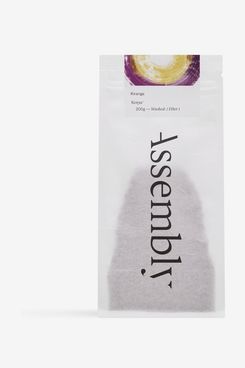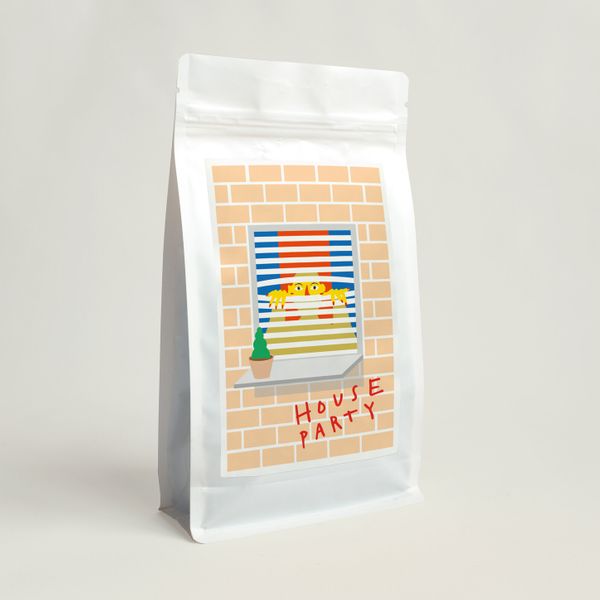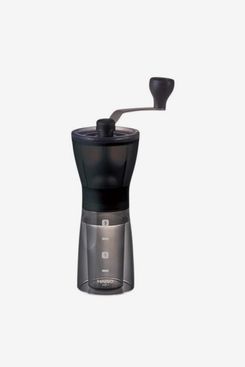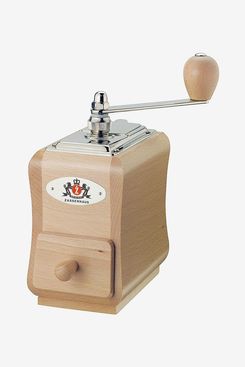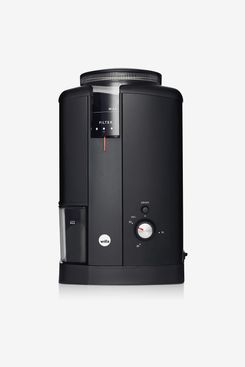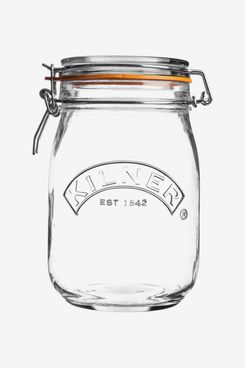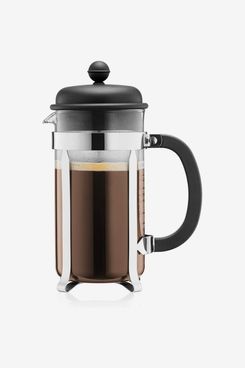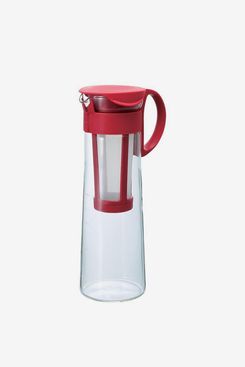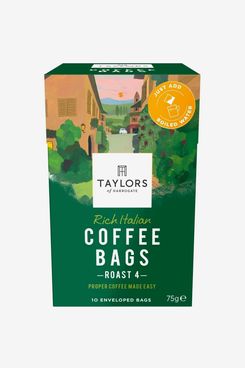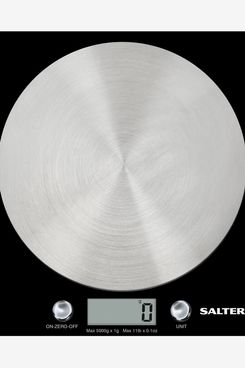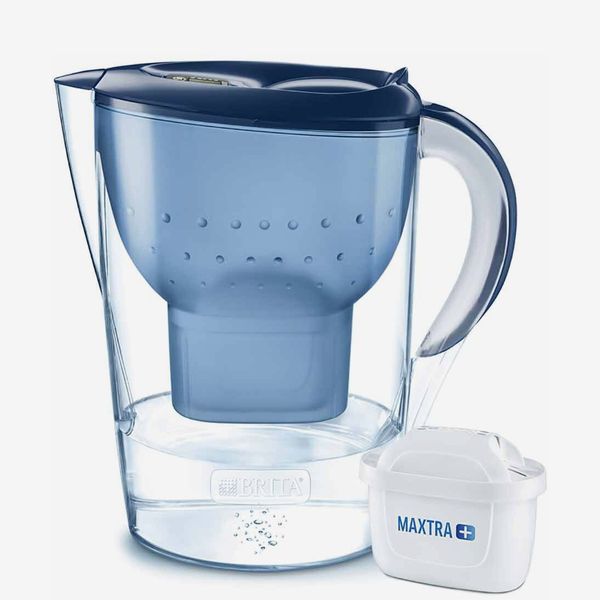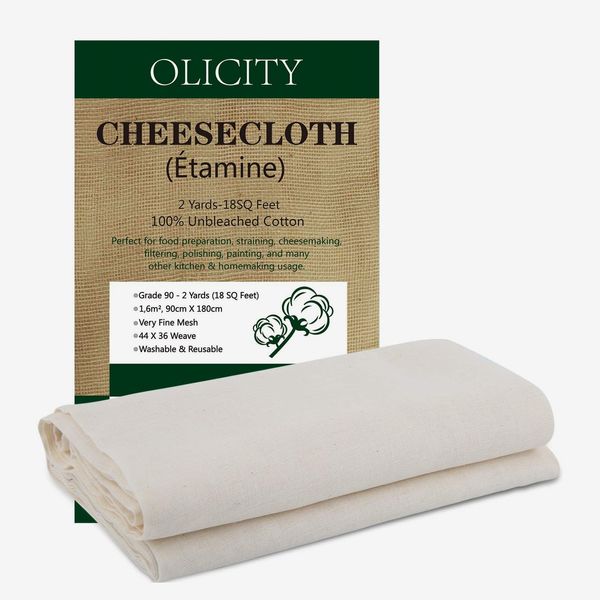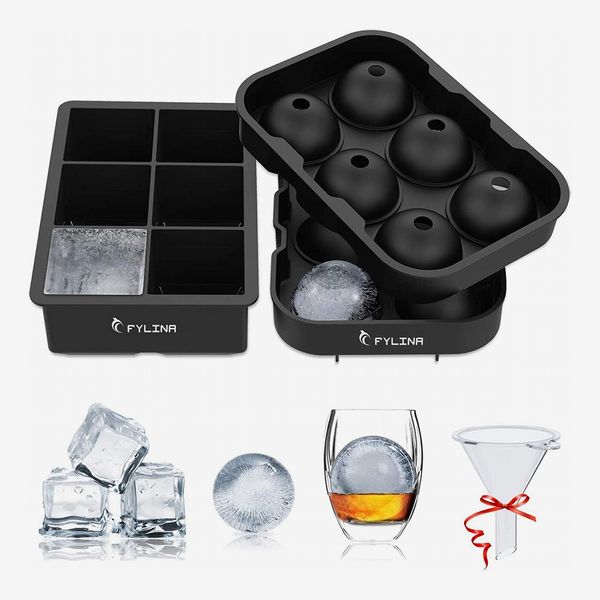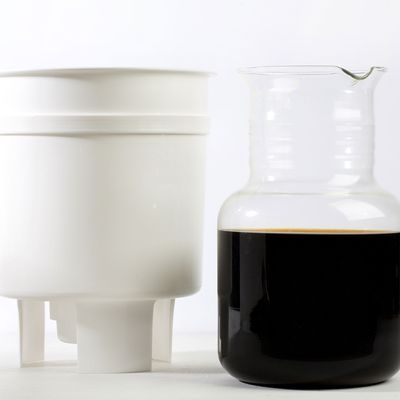
Cold brew is one of the best ways to enjoy coffee in warmer weather, but if you’re paying £5 a cup from your favourite café, you might want to consider making your own at home. “It can seem a bit daunting, but cold brew is actually very easy to make — and you don’t need to buy a whole lot of stuff,” says Jamie Strachan, head of coffee at Dark Arts in Hackney. Alex Wallace, head of quality control at Caravan Coffee Roasters, agrees. “Cold brew can be as simple or as complicated as you want to make it.”
In order to make the best cold brew possible, it’s worth understanding more about the process. “Cold brew works in the same way as a French press, but without the hot water, the extraction takes a lot longer,” explains Strachan. According to Bobby Ashman, head of product at Presto Coffee, “because the coffee grounds are steeped in cold water, there is no heat or pressure to extract the coffee flavours quickly.” This means mixing your coffee in cold water and leaving it to steep for a prolonged period of up to 12 hours.
Because the process is different to hot brewing, the flavour profile is often different, too. “When coffee gets cold it loses some of its aromatic intensity it also leaves a lot of the acids behind, which is why cold-brew coffee tastes smooth, sweet, and chocolatey,” says Ashman.
To help you master the art of making your own cold brew at home (and maybe save some cash while it’s still iced-coffee season), we talked with 11 experts, including baristas, roasters, and coffee-shop owners, about their favorite cold-brew methods, including the scales, grinders, and other tools they use.
What kind of coffee should I use for cold brew?
Different varieties of coffee have different characteristics, so the process of cold-brewing means some beans will not take well to being steeped for a longer period of time. Bradley Steenkamp, from Horsham Coffee Roaster, suggests avoiding dark-roasted coffees as these tend to taste very bitter. “Almost all other coffees work really well for iced coffee, but always look for an ethically sourced, traceable coffee that has been freshly roasted.”
Lynsey Harley, founder of Modern Standard Coffee, suggests coffee from Central and South American regions, like Guatemala, Columbia, and Peru. “These are renowned for their levels of citrus acidity, which make them excellent options for a refreshing drink. They also tend to have milk-chocolate notes, which is conducive to sweetness.” Fruity and floral coffees, such as Kenyan or Rwandan beans, will also work well. Generally, Harley says, look for light to medium roasts. “Anything darker might be too bitter.”
Howard Gill, head roaster at Grind, also suggests considering how you take your coffee when it comes to selecting what variety you use. If, for example, you sweeten your coffee, “make sure you’re using a really sweet-tasting coffee in the first place — Brazilian coffee is a personal favourite of mine for that.”
I myself like making cold brew using this Kenyan blend from Assembly, in Brixton, which has stone-fruit and citrus notes.
I also really like Cardiff-based Hard Lines, particularly their Brazilian blend, for its chocolate-and-honey profile.
How fine should I grind my coffee?
Our experts recommended a coarse grind, similar to that of a French press. “When we say ‘grind size’, we’re really referring to ‘surface area’,” explains Wallace. “The more surface area you expose to the water, the easier it is for the water to get in, absorb the flavour, and get out.”
You can either ask for this to be done for you at a coffee shop, or you can grind your beans yourself, with either a manual or electric coffee grinder. “If you grind too coarse you will have weak coffee, and if you grind too fine you will over-extract the coffee and it will taste bitter,” says Esmeralda Lobos, founder of Jewel and Kong. “My preferred method is to go finer on the grind,” says Michael Svoboda, head brewer at Minor Figures. “On a scale of 1-10 (1 being fine and 10 being coarse), I go for grind size 7.”
Coffee grinders come in two styles: ceramic “burr” grinders and blade grinders. All our experts recommended burr grinders, as the cog-style mechanism ensures the coffee is ground more evenly. “Surface area is important,” says Wallace. “And with blades, the coffee is whizzed around and smashed into big, medium, and small pieces — they also produce a lot of coffee dust. That inconsistency isn’t good for your coffee — it means the water will struggle to extract flavour from the large bits, which will cause it to taste sour.”
Proper Coffee’s Sertan Djelal added that “metal grinders can sometimes burn or singe the coffee resulting in a more ‘bitter’ taste.”
The next thing to consider is whether you want a manual or electric grinder; this will largely depend on how often you plan on grinding your beans. Djelal recommends Porlex, Zassenhaux, and Hario manual models, as well as Wilfa and Iberital electric models. “Whatever you’re using, make sure you use a fresh grind unless you want a flavourless and dull cold brew.” One benefit to electric grinders is that they will have more options for choosing your desired coarseness; the Wilfa grinder, below, even has a specific setting for an Aeropress, and comes recommended by Roosa Jalonen, head of production at The Gentlemen Baristas.
However, if you don’t have fresh coffee beans, several of our experts said pre-ground coffee can also work in a pinch. “The more gentle cold-brewing style is more forgiving and likely to hide any undesirable flavours coming from pre-ground and de-gassed coffee,” says Svoboda.
[Editor’s note: Djelal’s recommended model, the Wilfa Uniform, is sold out, but this is the model I use myself.]
What ratio of water to coffee do I need for cold brew?
This was something our experts all gave different answers to, but the most common answer was a 1:10 ratio of ground coffee to water. “For example, you could use 50g of ground coffee for a 500g cold-brew drink, or 100g for 1 litre and so on,” says Harley.
This ratio was also recommended by Strachen and Gill, who noted that “1:10 is a little strong, but you’re going to pour it over ice afterwards, which will dilute the brew perfectly.” Overall, our experts said it was a good place to start as it works perfectly with a 1L receptacle.
Our experts all agreed that specialist equipment isn’t necessary for brewing your cold brew in — a Kilner jar or French press is fine.
Svoboda says “a French press already provides an adequate, reusable filter. Just brew in the glass beaker and once the brew is complete, use the plunger to separate the grounds from the liquid.” Dejal suggests filtering the cold brew twice, as the grounds cans sometimes get through the mesh. “Filter once with a fine sieve, and once again with filter paper, preferably non-bleached. The end result is just as good as using specialist equipment.”
Svoboda, Djela, and Wallace also recommended Hario’s specialist cold-brew immersion jug. Hario recommends immersing the coffee for a minimum of eight hours.
For something completely mess free, Ashman suggests using coffee bags. “They are exactly the same, but at the end of the brew you can throw away the coffee bag and all the mess in one go.” A number of coffee brands have expanded into coffee bags, including Taylors of Harrogate.
Do I need to weigh my coffee?
“If you’re going to invest in any equipment for making coffee, it should be a set of scales,” says Wallace. Weighing your coffee will guarantee more consistency, especially if you’re trying different brands and varying the coarseness of your grounds.
“Different coffees and blends can have a wide difference between size and density, so a tablespoon of one coffee might weigh significantly less than a tablespoon of another coffee,” says Lobos.
Chances are you have a set of scales already, but digital ones are now reasonably inexpensive and easy to stash in a cupboard when not in use.
Other cold brew essentials
Our experts were all in agreement that a water filter was non-negotiable. “Unless you live in a place where tap water is top quality, you should filter it,” says Lobos. “Since almost 99 percent of coffee is water, you should make sure to use water that can get the best out of coffee, otherwise, you risk ruining the flavour.” “We prefer to use filtered cold water as it reduces the risk of anything else in the water affecting the outcome of your brew,” adds Harley.
Harley and Strachen both recommended cheesecloth for straining any cold brew you make from a jar. “If you get really stuck, you can use a T-shirt,” suggests Strachen. “Even tights would work,” says Harley.
You’ll also get through a lot of ice if you’re making cold brews on the regular. We like these large ice-cube moulds, which will help keep the brew cold in your glass.
The Strategist UK is designed to surface the most useful, expert recommendations for things to buy across the vast e-commerce landscape. Read about who we are and what we do here. Our editors update links when possible, but note that deals can expire and all prices are subject to change.
